This vegan cabbage stew with bulgur and navy beans is hearty, wholesome, and comforting. It has a brothy tomato base and lots of texture from chopped cabbage, white beans, and cracked bulgur wheat. This is a great soup to make ahead—it becomes even more flavorful after a couple days!
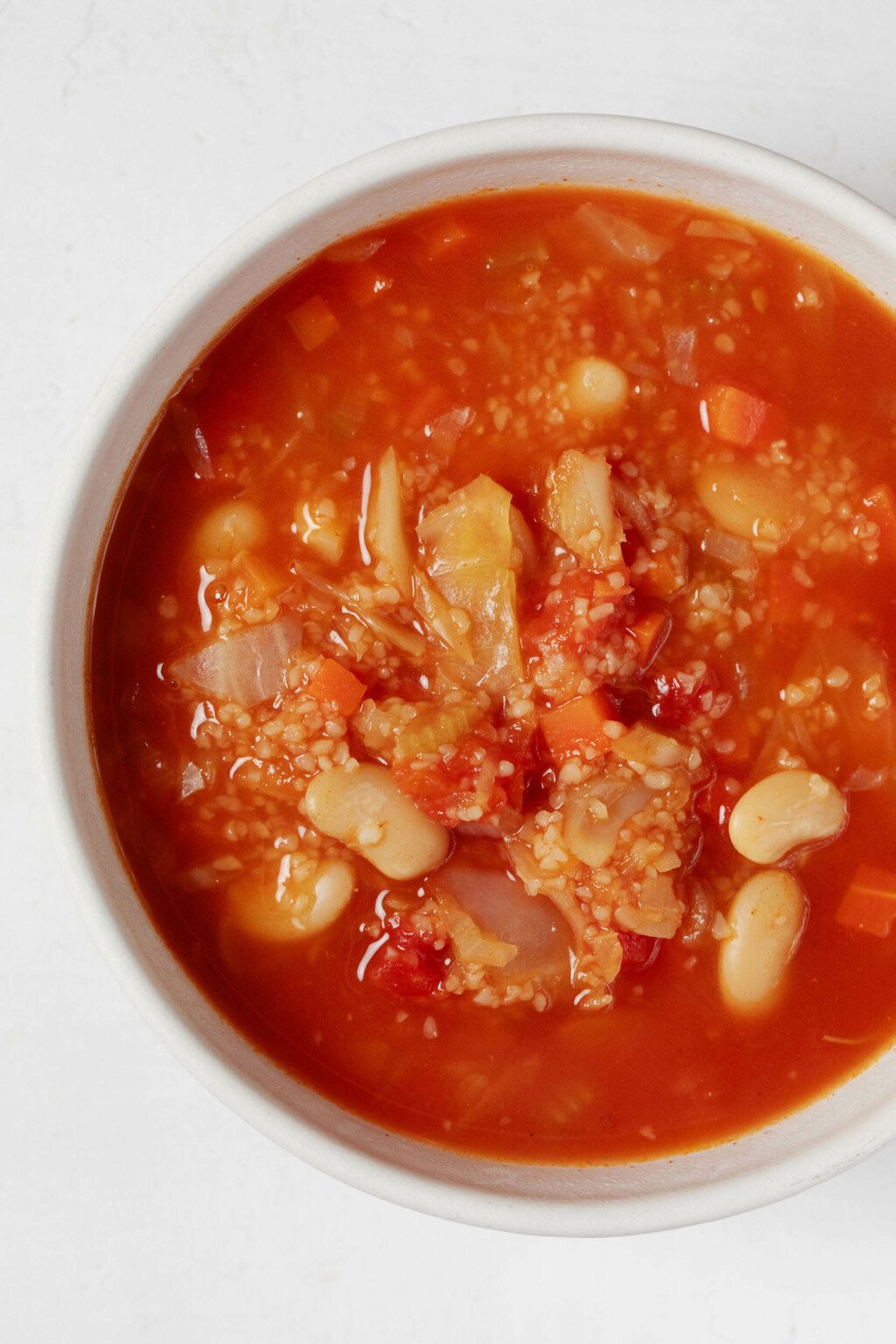
We sprang forward into springtime this week.
No sooner had we set the clocks an hour earlier (or woken up wondering why it seemed so late), than the weather got very chilly for a day.
And now, suddenly, it’s warm again.
Such are the unpredictable ups and downs of spring!
In any case, there’s still a chill in the air, and for as long as that remains true, it’ll be soup season for me.
And isn’t it nearly always soup season? It has to be blazing hot outside for me to turn down a cozy, nutritious bowl, warm bowl of vegan soup.
This particular soup is filling and full of texture, which is how I like my soups to be. It also features one of my favorite—and, I think slightly underrated—vegetables: cabbage.
Cabbage soups for the soul
There are so many ways that I like to enjoy cabbage: in cabbage pasta, slaw, vegan colcannon, as roasted cabbage steak wedges, and in the form of a good, old-fashioned pot of braised red cabbage.
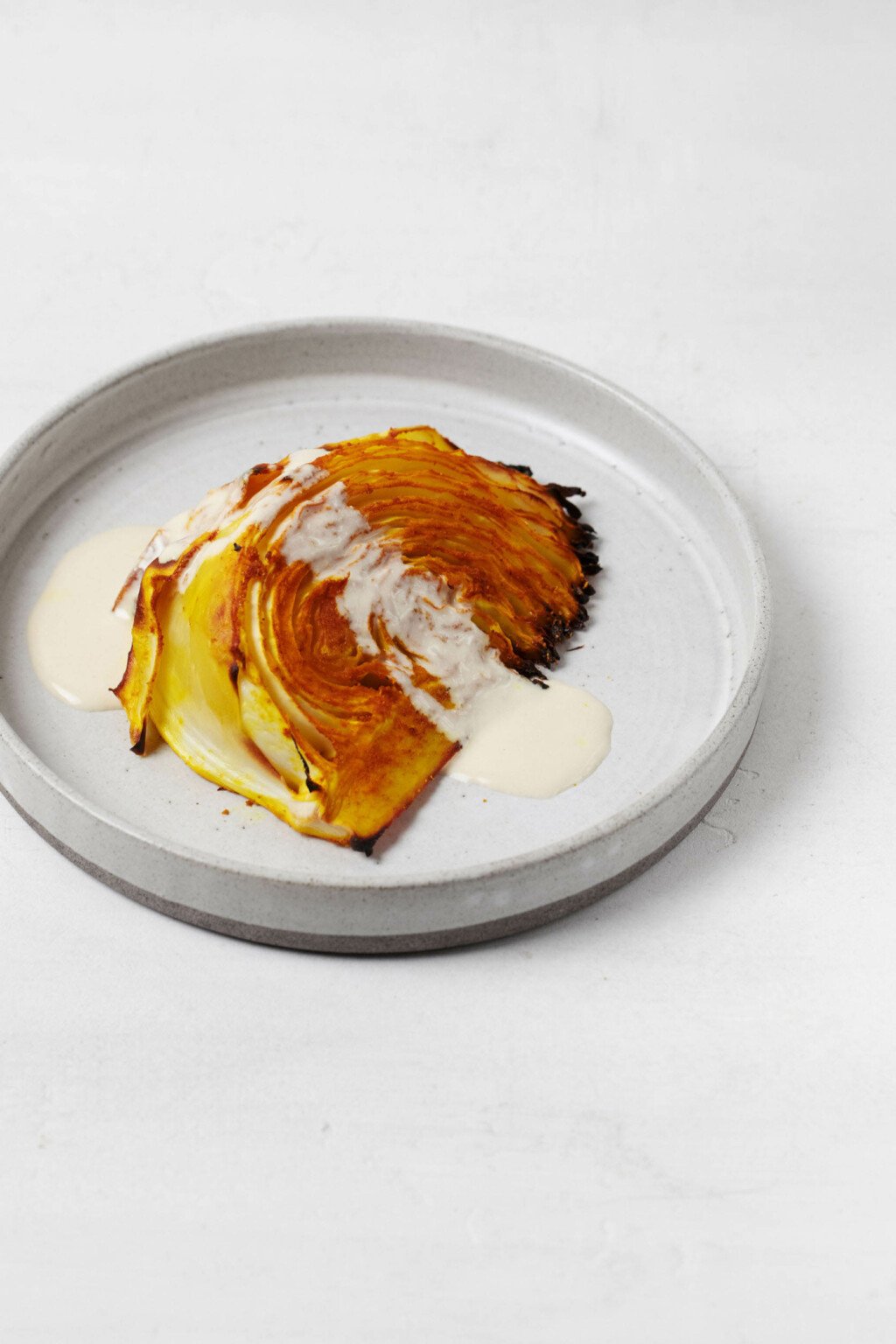
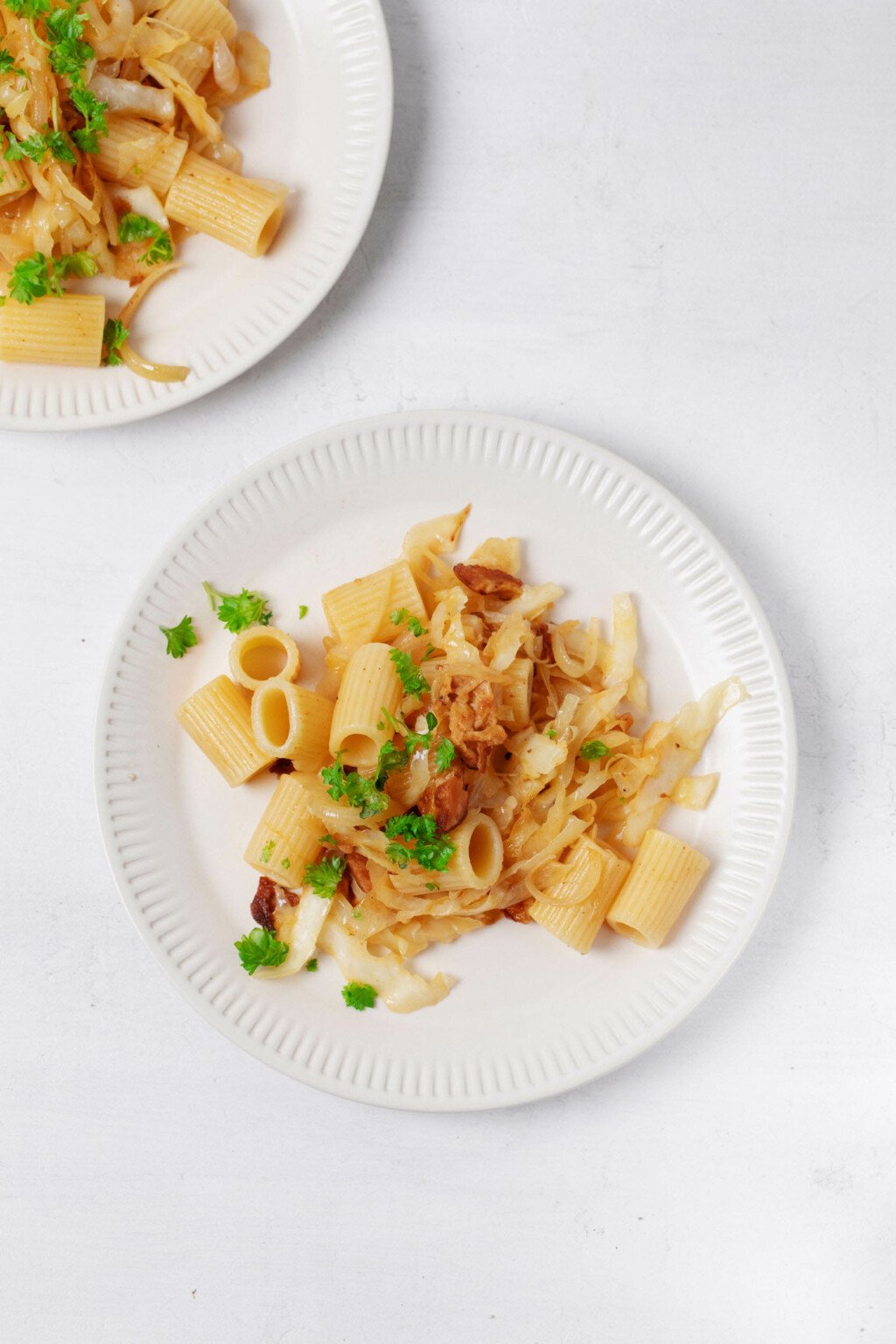
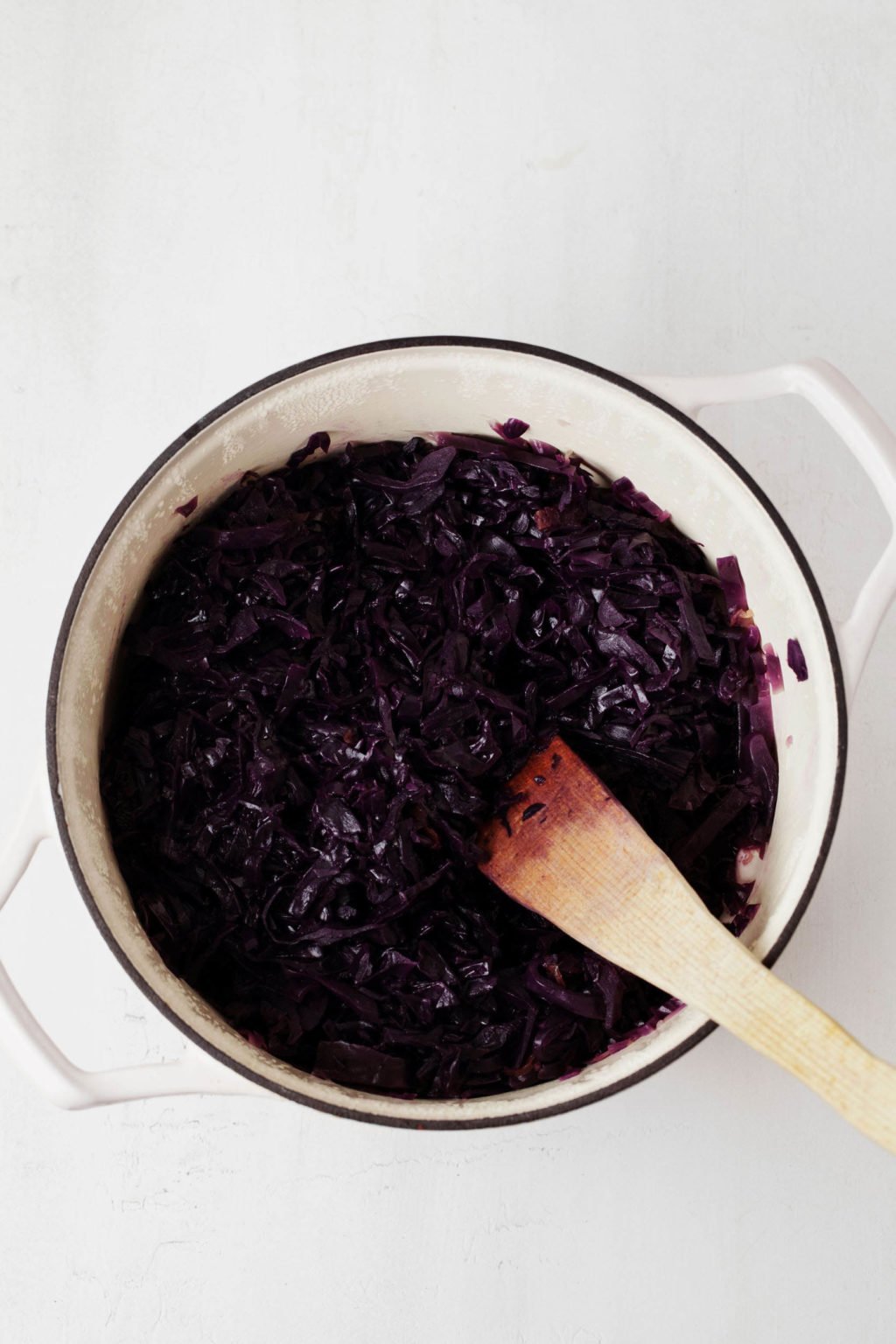
But for all of these excellent uses for this nutritious vegetable, there’s really nothing like cabbage in soup.
I first fell in love with cabbage soup when I was writing my cookbook Power Plates.
There are two soups in there that include cabbage: the recipe for ribollita and the recipe for spicy cabbage chickpea soup.
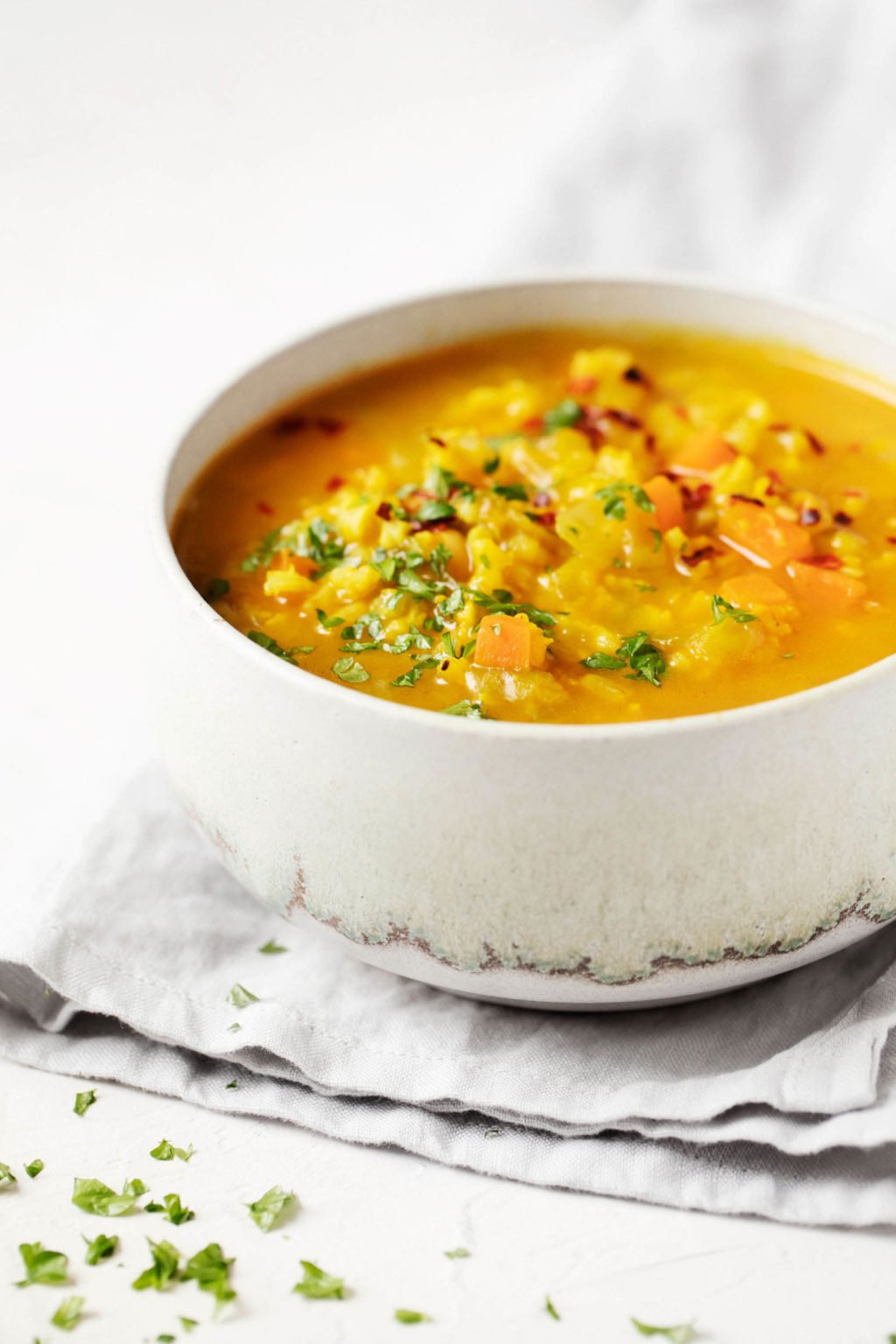
The latter soup has become such a fan favorite that I actually chose to share it on this blog, too.
What I learned in creating these recipes is that cabbage is a great veggie for soups: firm enough not to fall apart, yet also tender enough to be pleasing.
Cooking cabbage for a longer period of time, which is typical for soups, helps to bring out its softness and natural sweetness.
Cabbage also has substance. I love folding leafy greens into soups, but chopped or sliced cabbage is undeniably heartier—and every bit as health-giving.
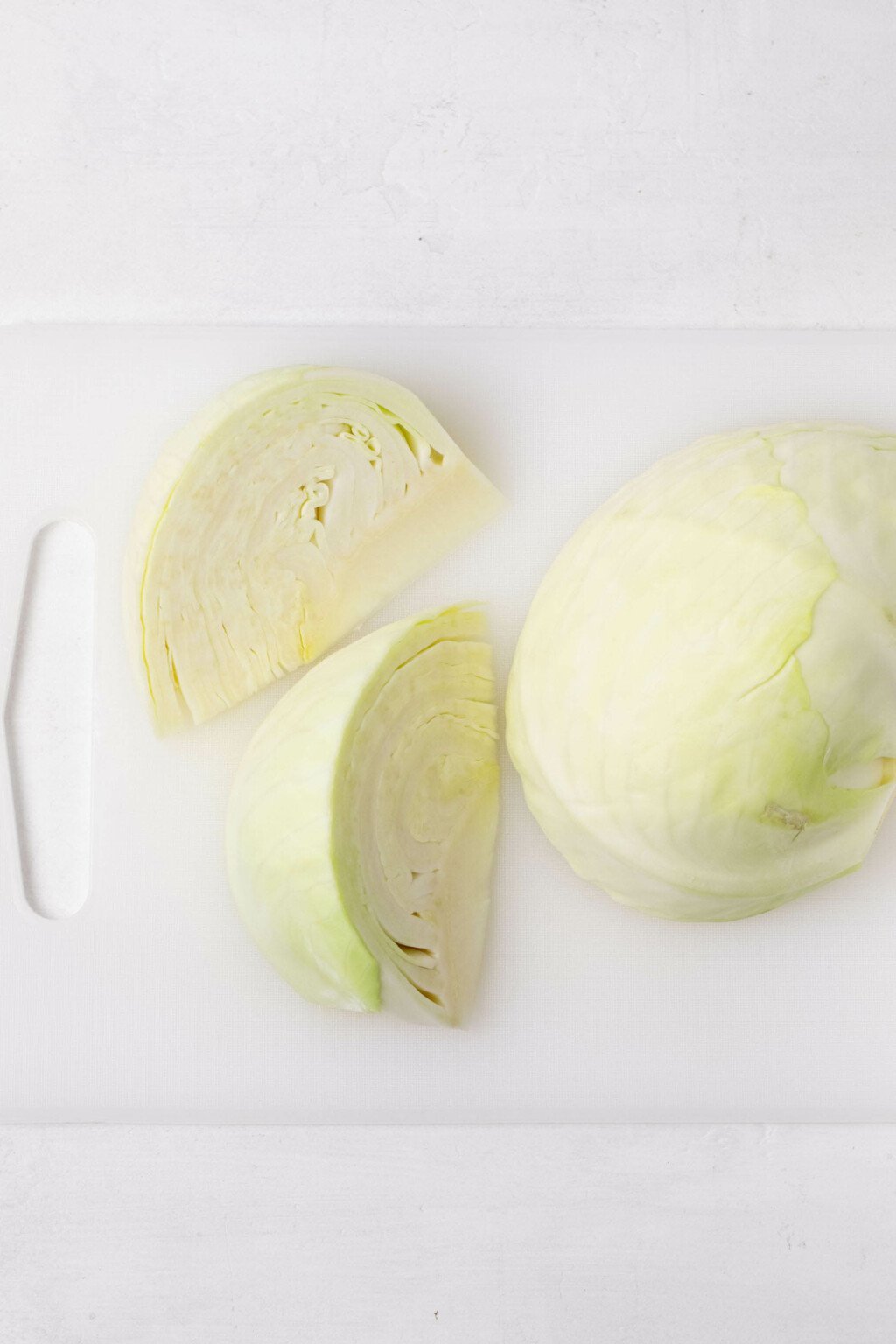
Cabbage nutrition
I could go on and on about the many nutrient properties of a humble head of cabbage. But here are some highlights for you:
- Vitamin C
- Vitamin K1
- Phytosterols (plant compounds that may play a role in helping to reduce cholesterol levels)
- Glucosinolates (these are sulfur-containing plant compounds that might be especially beneficial for heart health)
- Dietary fiber
I give a little more detail about how wonderfully nutrient-dense cabbage is in this post.
One quick word about those glucosinolates mentioned above: they become biologically active when cabbage is crushed, chopped, or chewed.
That’s part of why it’s a good thing that the cabbage in this cabbage stew recipe is chopped up before it’s added to your pot.
What type of cabbage is best in this cabbage stew recipe?
I recommend using green, savoy, or napa cabbage for the soup.
Red cabbage will work from a taste perspective, but the mixture of its purple color and the redness of tomatoes might lead to a muddy-looking soup!
A grain, a green, and a bean
One of my favorite ways to think about meal planning is to combine a grain, and green, and a bean within any plate or bowl.
Whether I’ve meal prepped extensively and have a lot of vegan basics in my fridge, or I’m winging it for the week, I’m bound to have a can of beans or a block of tofu, some sort of fresh or frozen green vegetable, and a variety of grains at home.
Sometimes creating a meal is as simple as grouping these components together into a bowl and adding a great sauce or dressing.
Sometimes it takes the form of a simple grain skillet or pasta dish.
And there are many instances in which grains, green vegetables, and beans can be turned into a soup.
With green cabbage as the vegetable, navy, great northern, or cannellini beans (basically, your white bean of choice) as the plant protein, and bulgur as the grain, this brothy cabbage stew can be a meal unto itself.
A boost from bulgur wheat
I’m a big fan of adding pasta, from orzo to tortellini, to my soups. But sometimes I forget how excellent the many types of whole grains can be in a pot of soup.
From quinoa in chili to tomato soup with rice, grains can enhance the texture and density of soups and stews so nicely. They also add nutrition, of course: lots of fiber, some protein, and more.
In this particular cabbage stew, the grain is bulgur wheat.
Bulgur is a form of cracked wheat. You may be most familiar with it from tabbouleh or other Mediterranean and Middle Eastern dishes. It has a chewy texture and a small shape.
Bulgur is also very nutritious. It’s got a good amount of plant protein in each serving—about six grams—along with fiber, iron, B-vitamins, and folate.
I’ve used bulgur in many types of recipes. Bulgur can create some texture and density in vegan meatballs or chili. It makes wonderful grain salads, including my my sweet potato bulgur citrus salad and lemony bulgur chickpea salad.
I especially enjoy using bulgur as a stuffing for vegetables, such as my bulgur-stuffed eggplants with currants and pine nuts.
Bulgur is sometimes labeled as fine, coarse, or extra coarse. It may not be labeled at all, but usually when I find it at major grocery stores in the US, it has a fine consistency. I like the coarse bulgur wheat, too.
How to make cabbage stew with bulgur and navy beans
The cabbage stew is a one-pot recipe, which means that the steps for preparing it are quite simple. Here’s how the process goes.
Step 1: Sauté the vegetables
You’ll begin by sautéing in olive oil the vegetables that play a starring role in the cabbage stew. onion, celery, and carrots go into the pot first and cook for about five minutes.
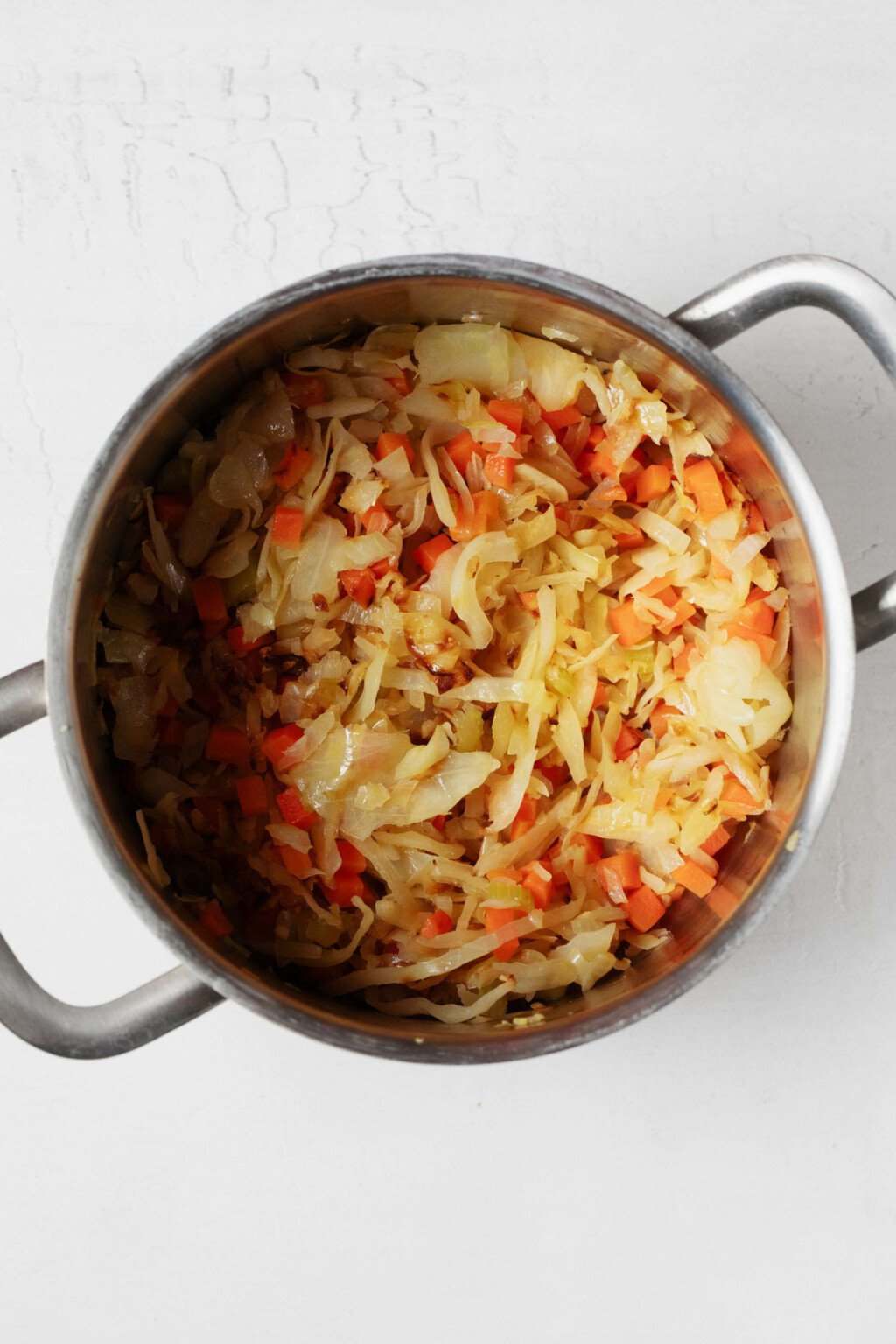
Then, you’ll add your cabbage and cook it for about ten minutes, or until it’s tender and maybe just starting to brown.
Step 2: Add seasonings
The seasonings for this soup are simple. Tomato paste will deepen the soup’s flavor and add some umami, while two types of paprika add sweetness and smokiness, respectively.
Step 3: Simmer
Finally, you’ll add the remaining ingredients, which are tomatoes, broth, bulgur, and navy beans, bring the mixture to a boil, and reduce the heat to low.
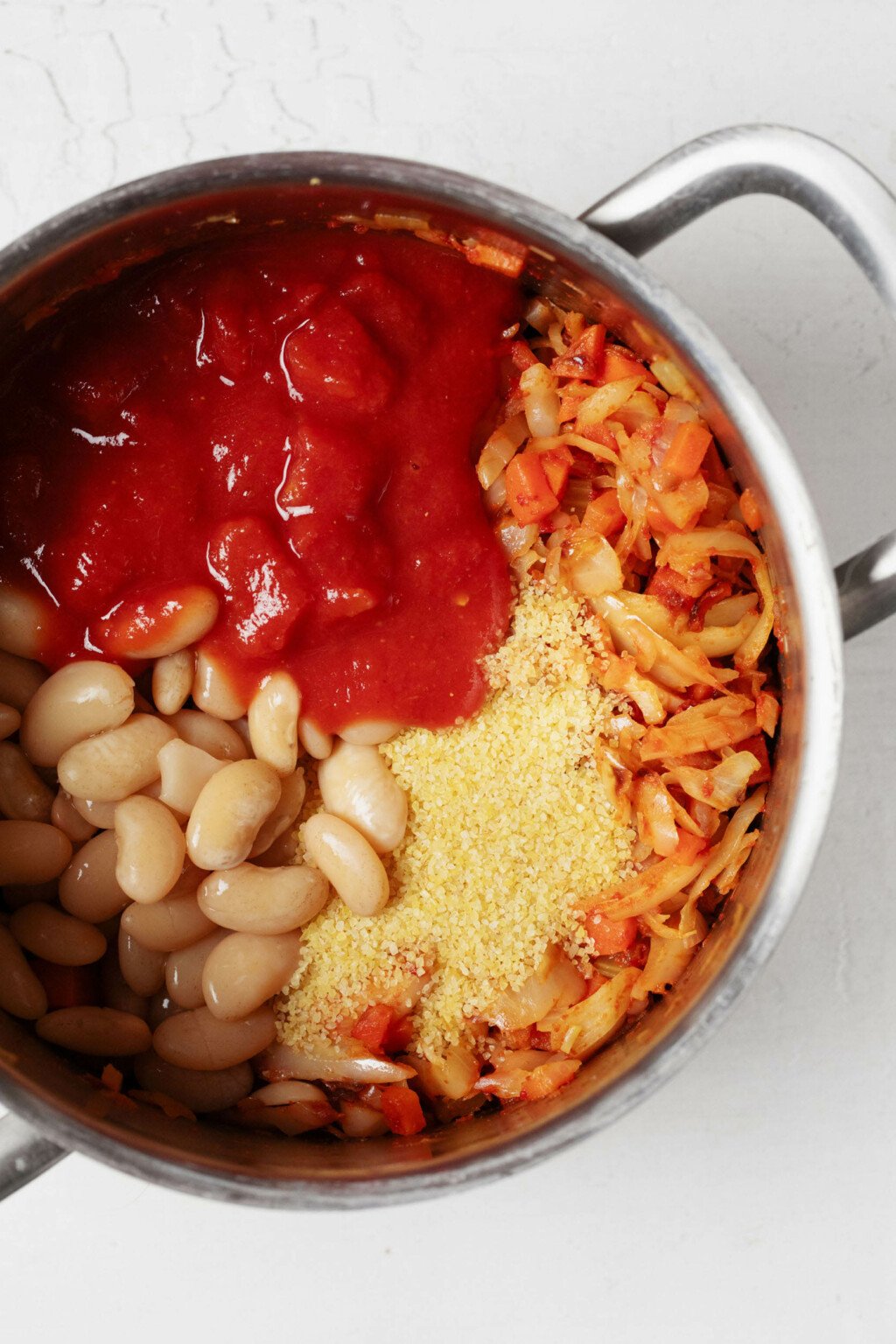
Simmer the soup for twenty-five minutes, or until the bulgur is fully cooked, yet retains its chewy texture.
You’ll finally season the soup to taste with a little white wine vinegar, as well as any additional salt or pepper that you’d like, and serve it.
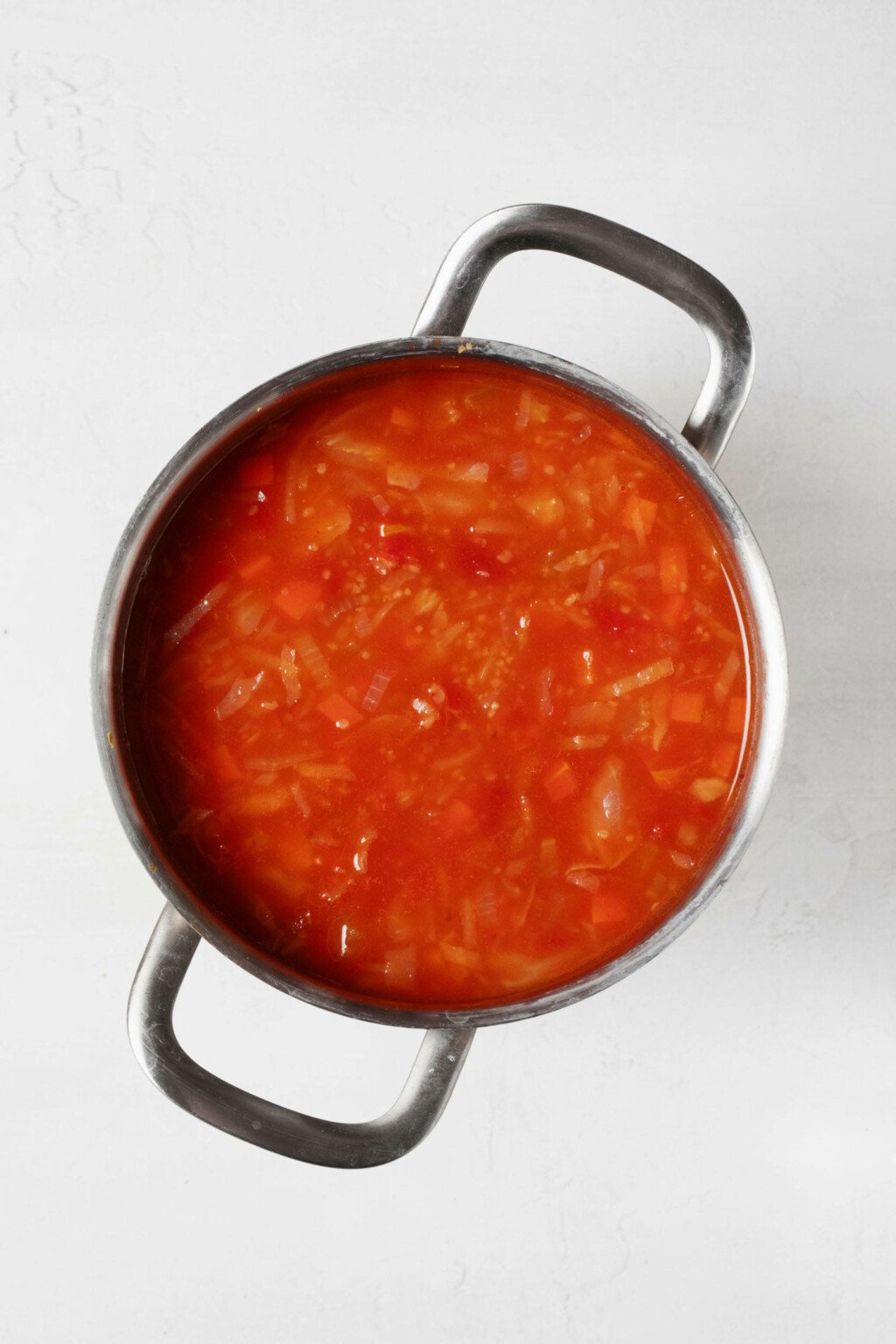
Variations & additions
There’s already plenty happening in the cabbage stew, thanks to its grains and beans and ingredients with lots of substance.
Even so, you might wish to make it even more of a “kitchen sink” recipe. I think that any of the following would be fun additions:
- Chopped, dark leafy greens, such as spinach or kale
- Baked smoky tofu, cut into small cubes
- Lemon pepper tempeh cubes
- Crusty croutons or a sprinkle of rustic breadcrumbs over the bowl
- A little sauerkraut, pickled red onions, or another fermented or pickled vegetable as a topping
If you need to make some substitutions, this recipe can also accommodate variation. For example, you can trade chickpeas for the white beans.
In place of the bulgur, you could use couscous, another small pasta shape, such as pastina, or quinoa. Quinoa would make the cabbage stew gluten-free!
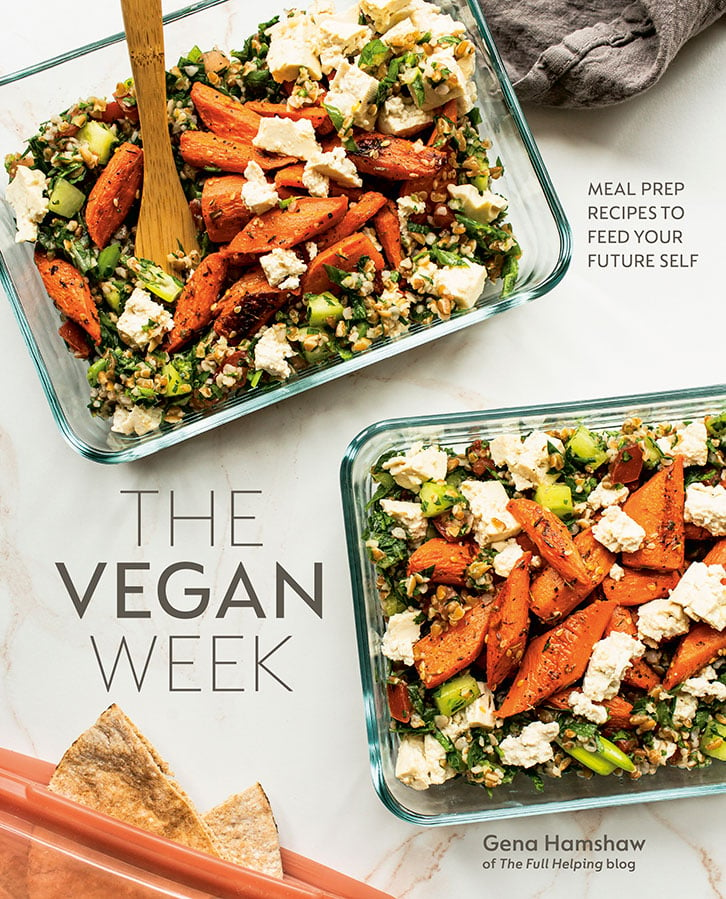
The Vegan Week
Embrace the joy of eating homemade food every day with the hearty and wholesome recipes in The Vegan Week.
Whether you have three, two, or even just one hour of time to spare, The Vegan Week will show you how to batch cook varied, colorful, and comforting dishes over the weekend.
Meal prep & storage
Like many types of soup or stew, the cabbage stew only becomes more flavorful with time. I like it best on the third or fourth day after preparing it.
The soup can be stored in an airtight container in the fridge for up to six days, and you can freeze it for up to eight weeks. It’s an excellent, one-pot meal for your weekly vegan meal prep routine.
Make it today, or soon, and enjoy rustic, tasty, and nutritious bowls all week long.
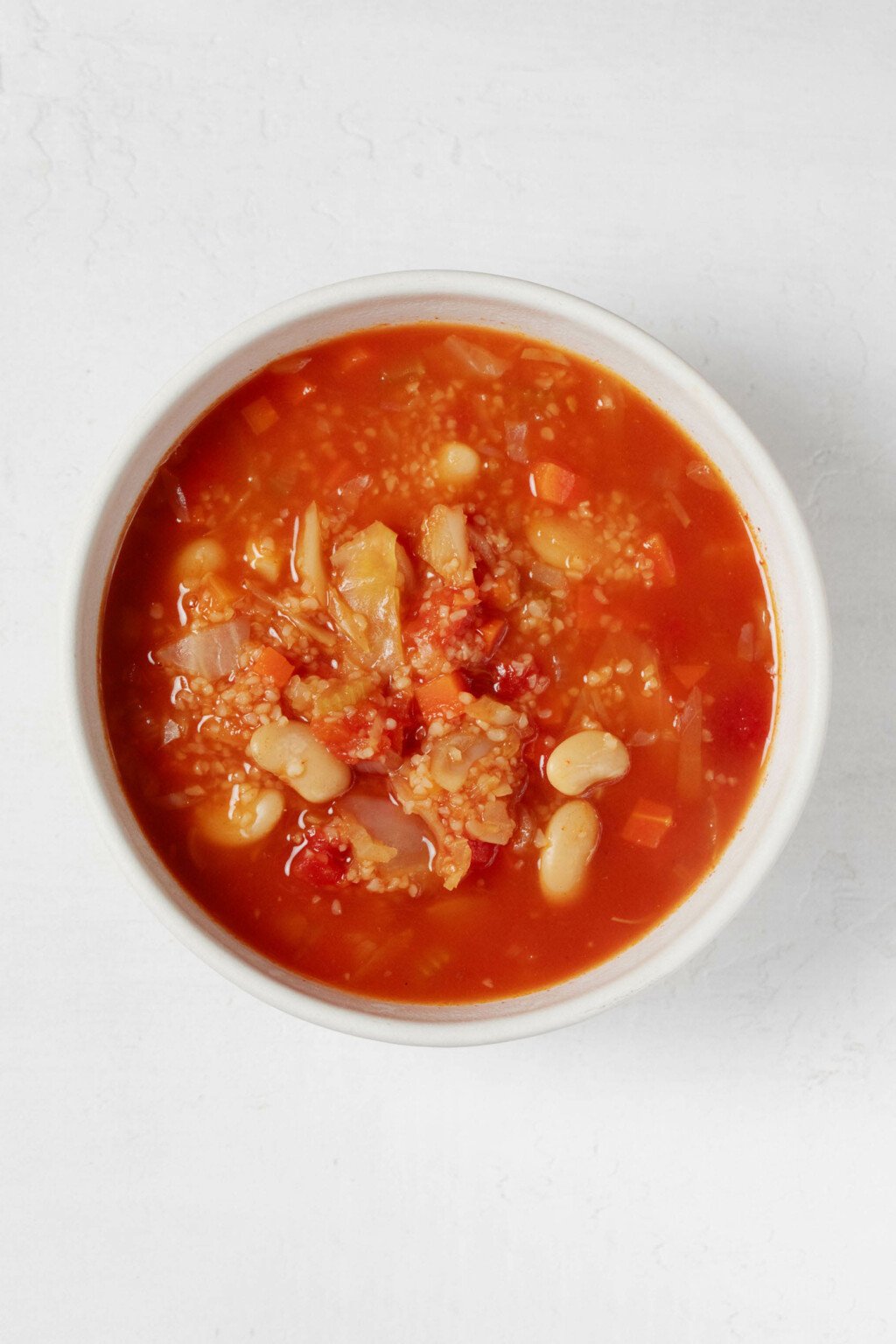
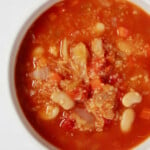
Vegan Cabbage Stew with Bulgur and Navy Beans
Equipment
Ingredients
- 2 tablespoons olive oil
- 1 white onion, medium dice
- 1 large or two small stalks celery, diced
- 2 carrots, trimmed, peeled or scrubbed, and diced
- 1 extra small or 1/2 medium small head of cabbage, halved crosswise and then thinly sliced lengthwise (about 1 pound / 455g after preparation)
- 4 tablespoons tomato paste (60g)
- 1/2 teaspoon sweet paprika
- 1/2 teaspoon smoked paprika
- 1/2 teaspoon salt
- 1 1/2 cups diced tomatoes, with their juices (1 14.5-ounce / 415g can)
- 1/2 cup bulgur wheat (90g)
- 1 1/2 cups cooked navy beans (1 15-ounce / 425g can, drained; substitute cannellini beans or great northern beans)
- Freshly ground black pepper
- White wine vinegar
- Optional: fresh, chopped parsley leaves, for serving
Instructions
-
Heat the oil in a large, heavy-bottomed pot over medium heat. Add the onion, celery, and carrots. Cook the vegetables, stirring occasionally, for 4-5 minutes, or until the carrots are just becoming tender and the onion is starting to become translucent. Add the cabbage. Continue cooking, stirring often, for 8-10 minutes, or until the cabbage is very tender and browning lightly at the edges. Stir in the tomato paste, both types of paprika, and salt.
-
When the tomato paste is evenly incorporated into the vegetables, add the tomatoes, broth, bulgur, and navy beans to the pot. Bring the mixture to a boil, then turn the heat to low. Cover and simmer for 25 minutes, or until the bulgur is tender, yet still chewy. Taste the soup; adjust the salt as needed and add white wine vinegar, one teaspoon at a time, to taste. Divide the soup into bowls and garnish according to your preferences.
-
The soup can be stored in an airtight container in the fridge for up to six days and frozen for up to eight weeks.
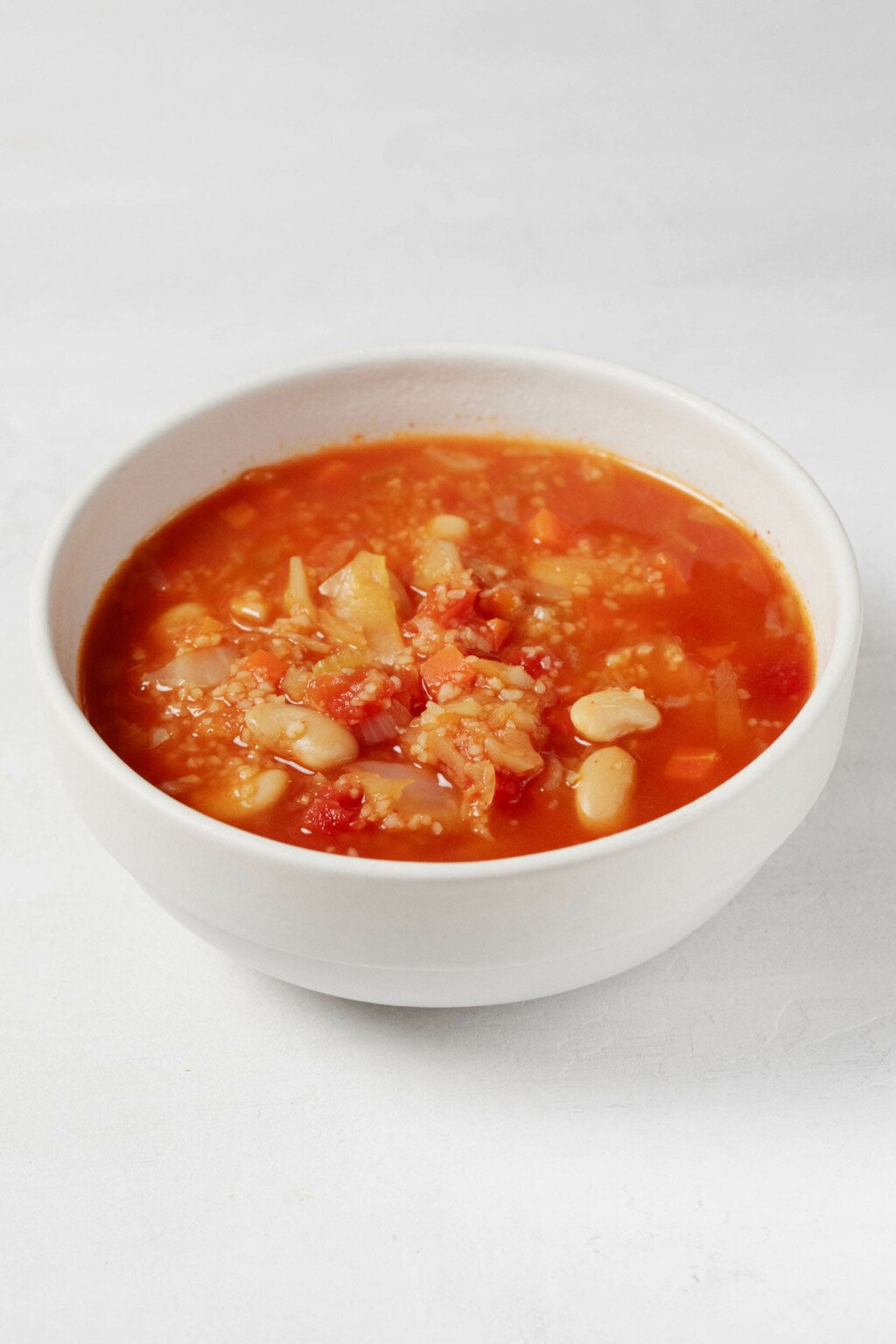
No matter the season, there’s just nothing so comforting as a bowl of soup or stew. I love the nutrition of this particular bowl, and I hope that you’ll enjoy it, too!
xo
The post Vegan Cabbage Stew with Bulgur and Navy Beans appeared first on The Full Helping.